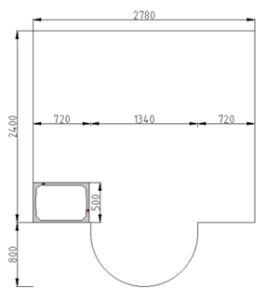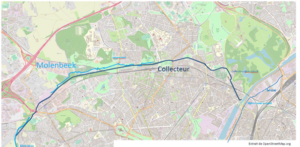Today, the Molenbeek in Brussels flows in the open for most of its course, then flows through the wastewater collector downstream of the King Baudouin Park before emerging at the treatment plant in the north of the region. Bruxelles Environnement now launched a study to reconnect the Molenbeek with the Zenne.
Bruxelles Environnement would like to restore the hydrological continuity of the Molenbeek basin. This by allowing the water of the brook to resume its role as a tributary of the Zenne and to relieve the collector of this clear water. The aim of the study is to establish the technical feasibility of such a reconnection,on the one hand by studying the various possibilities and assessing the constraints, and on the other hand to assess the cost of its implementation.
Molenbeek’s path through the collector 
Once mixed with waste water, the Molenbeek follows a +-2.8 km path to the level of the canal, where it flows into the left bank outfall and finally reaches the North CWWTP. It is along this route that the study will determine the technical and financial feasibility of separating the clear water from the stream in an inlet installed in the collector.
Technical solution
In collaboration with Vivaqua, which manages the collector, several technical solutions have been considered for building an inlet in the sewer:


The solution that received the most favourable reviews was the installation of a rectangular inlet on the left bank of the collector. This allows water to be collected from both the stream and the drains of the collector’s left bank.
The budgetary assessment of the implementation of such a solution showed that an investment of +- €5 million would be required to carry out the reconnection work.
Next steps
Now that the technical solution has been validated by Brussels Environment and Vivaqua, the next step in the project’s success must be to plan the budget for the work. Beforehand, a detailed project study leading to execution specifications will have to be carried out.



